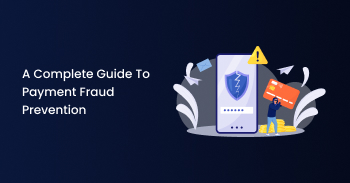Introduction
Digital banking has revolutionized how we manage our finances, offering unprecedented convenience and accessibility. However, this transformation has also given rise to an alarming surge in digital banking frauds in recent years. In this blog, we will delve into the primary reasons behind this worrisome trend and explore how individuals and financial institutions can enhance their protection.
1. Increased Reliance on Online Transactions
The shift toward online transactions, driven by factors such as the COVID-19 pandemic, has created more opportunities for fraudsters. As people increasingly conduct their financial affairs online, cybercriminals have greater chances to exploit vulnerabilities in digital systems.
2. Sophistication of Cybercriminals
Cybercriminals are becoming increasingly sophisticated, employing advanced techniques such as phishing, malware, and social engineering to steal sensitive information. These tactics often circumvent traditional security measures.
3. Weak Passwords and Authentication
Many individuals still use weak passwords or reuse them across multiple accounts. Additionally, some digital banking platforms may not enforce robust multi-factor authentication (MFA) measures, making it easier for fraudsters to gain unauthorized access.
4. Inadequate Customer Education
A lack of awareness and education about online security practices is a significant factor. Users may fall victim to scams due to ignorance or negligence, making it crucial for banks to provide clear guidance on safe banking practices.
5. Data Breaches
Data breaches at major organizations can expose customer information to cybercriminals. When user data is compromised, fraudsters can use this information to impersonate individuals and commit various forms of digital fraud.
6. Mobile Banking Vulnerabilities
The proliferation of mobile banking apps has introduced new vulnerabilities. Users may unknowingly download malicious apps or become targets of mobile-based phishing attacks, leading to financial losses.
7. Third-party Services
The integration of third-party financial services into digital banking platforms can introduce security risks. These services may not maintain the same level of security as traditional banks, making them attractive targets for cybercriminals.
8. Regulatory Challenges
The rapid evolution of digital banking has outpaced regulatory frameworks in some regions. This regulatory lag can make it challenging for authorities to effectively adapt to emerging threats.
9. Lack of Cybersecurity Investment
Financial institutions may not allocate sufficient resources to cybersecurity, leaving them ill-prepared to defend against evolving threats. Adequate investment in cybersecurity is essential to protect both the bank and its customers.
10. Social Engineering Attacks
Fraudsters often exploit human psychology through social engineering tactics, manipulating individuals into divulging sensitive information. These attacks can be challenging to detect and prevent.
Conclusion
The increase in digital banking frauds is a multifaceted problem that demands a comprehensive response. As technology continues to evolve, so will the tactics of cybercriminals. Individuals and financial institutions must remain vigilant, invest in robust security measures, and prioritize user education to mitigate the risks associated with digital banking. By understanding the top reasons behind this surge in fraud, we can take proactive steps toward a safer digital banking environment.
by Sudesh Prabhu





